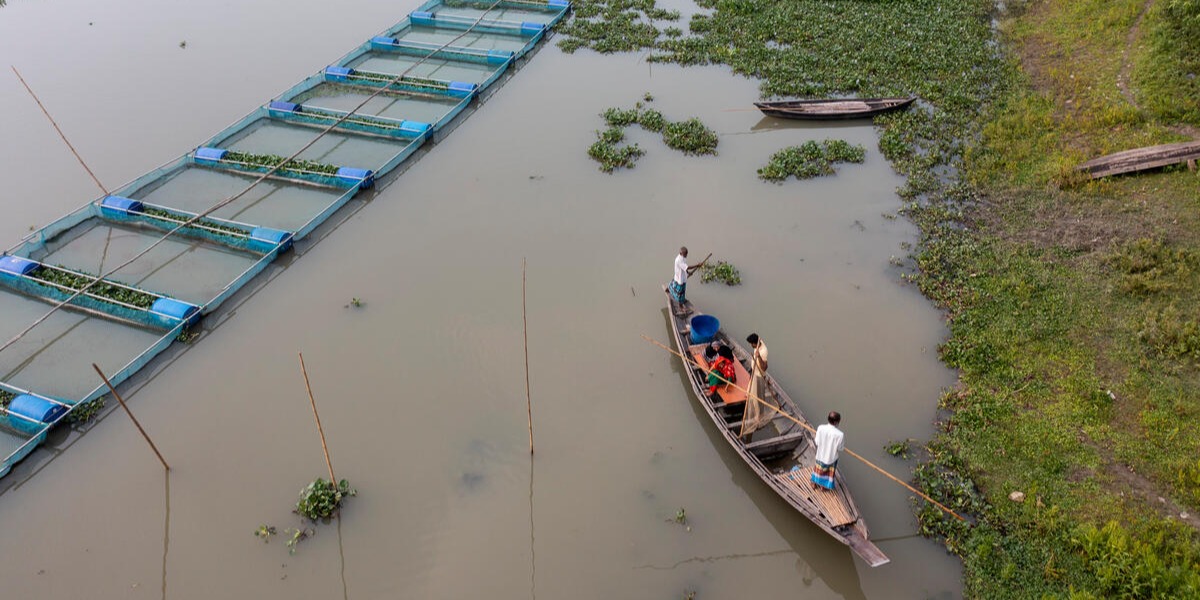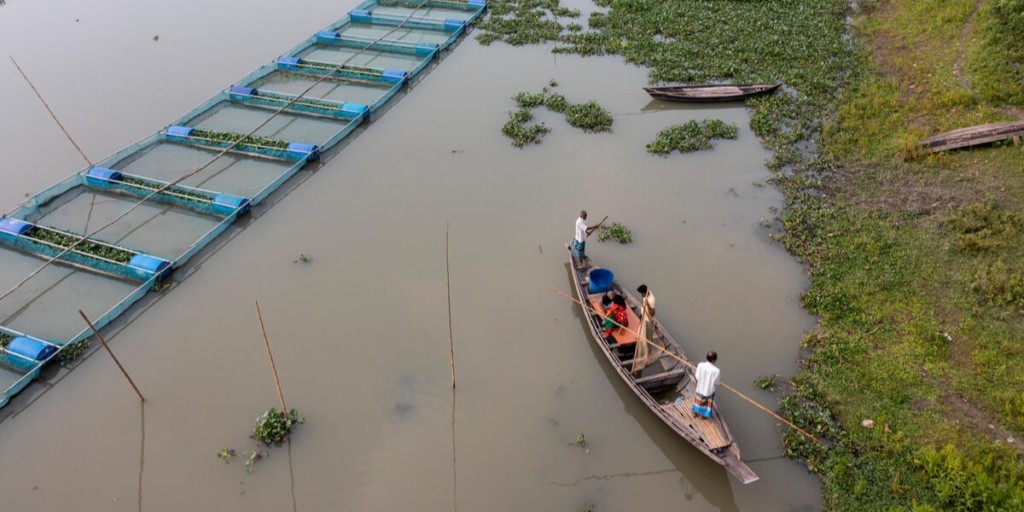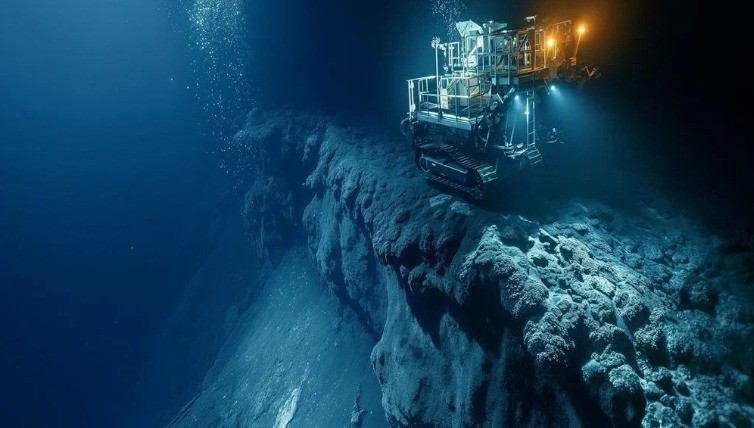For the first time, aquaculture exceeds catch fishing in terms of aquatic animal production, as indicated in the 2024 edition of The World Fisheries and Aquaculture Situation.
The growth of aquaculture indicates its ability to contribute more to meeting the growing global demand for aquatic foods, but future expansion and intensification must prioritize sustainability and benefit the regions and communities that need it most.
Rome/San José (Costa Rica) – Global fisheries and aquaculture production has reached an unprecedented level, with the production of aquatic animals from aquaculture exceeding that of catch fishing for the first time, according to a new report by the Food and Agriculture Organization of the United Nations (FAO) published today.
According to the 2024 edition of The World Fisheries and Aquaculture Situation, global fisheries and aquaculture production stood at 223.2 million tons in 2022, 4.4 percent more than in 2020. It included 185.4 million tons of aquatic animals and 37.8 million tons of algae.
« FAO welcomes the important results achieved so far, but other adaptive and transformational measures are needed to strengthen the effectiveness, inclusiveness, resilience and sustainability of aquatic food systems and consolidate their role in the fight against food insecurity, poverty reduction and sustainable governance, » said FAO Director-General. Qu Dongyu. « This is why FAO advocates blue transformation, in order to meet the requirements required to make improvements in production, nutrition, environment and living conditions, leaving no one behind.
The report will be officially presented at the high-level demonstration on ocean action entitled « Immersed in change », to be held in San José (Costa Rica).
Record production for aquaculture
In 2022, for the first time in history, aquaculture became the main producer of aquatic animals, ahead of catching fishing. Global aquaculture production has reached the unprecedented level of 130.9 million tons, including 94.4 million tons of aquatic animals, or 51 percent of total aquatic animal production.
The growth of aquaculture shows that this sector can contribute even more to meeting the growing global demand for aquatic food. However, its future expansion and intensification will have to give priority to sustainability and benefit the regions and populations that need it most.
Currently, aquaculture is dominated by a handful of countries, of which 10 – China, Indonesia, India, Viet Nam, Bangladesh, the Philippines, the Republic of Korea, Norway, Egypt and Chile – produce more than 89.8 percent of the total. Nevertheless, many low-income countries in Africa and Asia do not realize their full potential. Targeted policies, technology transfer, capacity building and responsible investment are crucial to promoting sustainable aquaculture where it is most needed, especially in Africa.
Global aquatic food consumption is on the rise again
The record production of aquatic food highlights the potential of the sector to combat food insecurity and malnutrition. The global apparent consumption of aquatic food of animal origin reached 162.5 million tons in 2021. It has increased almost twice as fast as the world’s population since 1961, with global annual per capita consumption rising from 9.1 kilograms in 1961 to 20.7 kilograms in 2022.
Of the total production of aquatic animals, 89 percent were intended for direct human consumption, which illustrates the fundamental role of fisheries and aquaculture in maintaining global food security. The rest was intended for indirect consumption or non-food uses, mainly for the manufacture of fish meal and oil.
It is essential to encourage increased consumption from sustainable sources to promote healthy diets and improve nutrition worldwide. Aquatic foods provide high-quality protein – 15 percent of animal protein and 6 percent of total protein worldwide – and essential nutrients such as omega 3 fatty acids, minerals and vitamins. In 2021, they contributed at least 20 percent to the availability of protein per capita, all animal sources combined, thus benefiting 3.2 billion people.
The production of catch fishing comes mainly from sustainable stocks
World production of catching fishing has remained stable since the late 1980s. In 2022, the sector produced 92.3 million tons, including 11.3 million tons in continental waters and 81 million tons in marine waters. Despite the growth of aquaculture, catch fishing remains an essential source of aquatic animals.
However, the proportion of marine stocks exploited at a biologically viable level fell to 62.3 percent in 2021, losing 2.3 percent compared to 2019. When the results are weighted according to the level of production, it appears that 76.9 percent of landings from stocks monitored by FAO in 2021 concerned biologically viable stocks. This highlights the role that effective fisheries management can play in facilitating the replenishment of stocks and the increase of catches, hence the need to urgently reproduce successful policies to reverse the current downward trend.
FAO predicts an increase in production and consumption
The report also contains FAO’s projections for fisheries and aquaculture, which predict an increase in global apparent production and consumption until 2032.
Aquatic animal production is expected to grow by 10 percent by 2032 to reach 205 million tons. The expansion of aquaculture and the recovery of catch fishing will explain this progression.
According to the report, apparent consumption will increase by 12 percent and will average 21.3 kilograms per capita in 2032. Increased incomes and urbanization, the improvement of post-catch/harvest practices and distribution as well as changes in eating habits should be the main factors.
However, apparent per capita consumption will continue to decline in Africa, as production may not keep up with population growth. These projections are particularly worrying for sub-Saharan Africa, where many countries cannot meet their nutritional needs, especially in animal proteins and micronutrients, without aquatic foods.
The report also presents a scenario that illustrates the potential impact of demographic dynamics on the supply of aquatic food of animal origin by 2050. Given the growth of the world’s population, in order to maintain the apparent consumption of aquatic food of animal origin at its estimated level of 2022, i.e. 20.7 kilograms per capita, until 2050, it would be necessary to increase the total supply of these foodstuffs by 36 million tons, i.e. by 22 percent. This highlights the need to accelerate priority measures for blue processing, in a world where aquatic foods play a greater role in eradicating hunger, malnutrition and poverty.
Declining employment but vital livelihoods for millions of people
In addition to nutrition and food security, fisheries and aquaculture are an important provider of livelihoods. According to the most recent data, 61.8 million people were employed in the primary fisheries and aquaculture sector in 2022, compared to 62.8 million in 2020.
Data broken down by sex indicated that women accounted for 24 percent of the total workforce but 62 percent of that of the transformation subsector. Gender inequalities remain, including wage disparities, a lack of recognition of women’s contribution to the sector and gender-based violence.
The World Fisheries and Aquaculture Situation is a flagship report that analyzes the state and health of global fisheries stocks as well as the evolution of fisheries and aquaculture at the global and regional levels. The 2024 edition puts the spotlight on the concrete advances of blue processing into action, highlighting the role played by FAO, in collaboration with members and partners, in promoting the expansion and intensification of sustainable aquaculture, efficiently managed fisheries and value chains that prioritize efficiency, safety and equity.
The 2024 edition in a few figures
All figures quoted refer to 2022, unless otherwise stated.
Production
Global fisheries and aquaculture production: 223.2 million tons
Aquatic animals: 185.4 million tons
Algae: 37.8 million tons
World aquaculture production: 130.9 million tons
World production of catch fishing: 92.3 million tons
Aquatic animal production by region: Asia (70 percent), Europe (9 percent), Latin America and the Caribbean (9 percent), Africa (7 percent), North America (3 percent) and Oceania (1 percent)
Main aquatic animal producing countries: China (36 percent), India (8 percent), Indonesia (7 percent), Viet Nam (5 percent) and Peru (3 percent)
Total estimated value of fisheries and aquaculture production at the first sale: USD 472 billion
Total estimated value of aquaculture production at the first sale: USD 313 billion
Sustainability
Proportion of marine stocks monitored by FAO that are exploited sustainably (2021): 62.3 percent
Proportion of marine stocks monitored by FAO that are sustainably exploited, weighted by production level (2021): 78.9 percent
Consumption
Global apparent consumption of aquatic food of animal origin (2021): 162.5 million tons
Global apparent consumption of aquatic food per capita (2021): 20.6 kg
Increase in global apparent consumption of aquatic food per capita: from 9.1 kg in 1961 to 20.6 kg in 2021
Employment
Number of people employed in primary production: 61.8 million
Distribution of the workforce by sector: fisheries (54 percent), aquaculture (36 percent), unspecified (10 percent)
Distribution of jobs by region: Asia (85 percent), Africa (10 percent), Latin America and the Caribbean (4 percent), Europe, Oceania and North America combined (1 percent)
Commerce
Main exporters of aquatic products of animal origin: China, Norway, Viet Nam, Ecuador, Chile
Main importers of aquatic products of animal origin: United States of America, China, Japan, Spain, France
Value of international trade in aquatic products: USD 195 billion
Source: FAO





